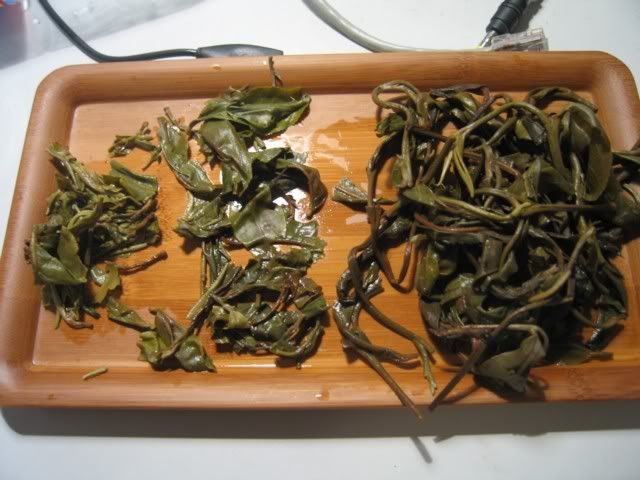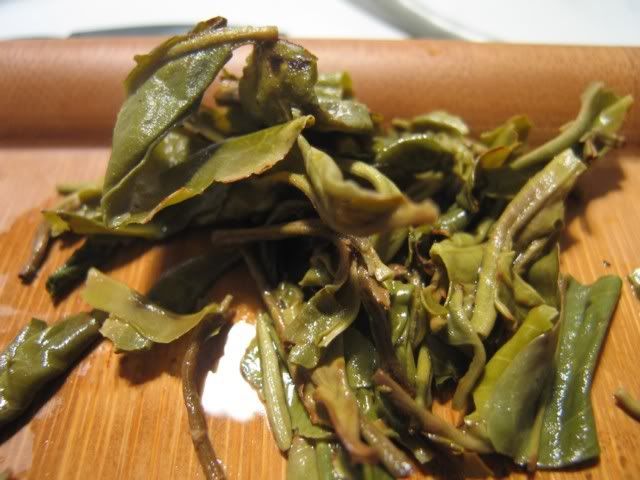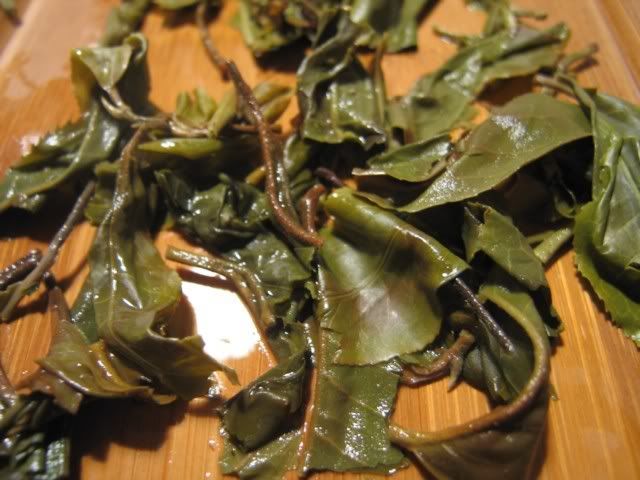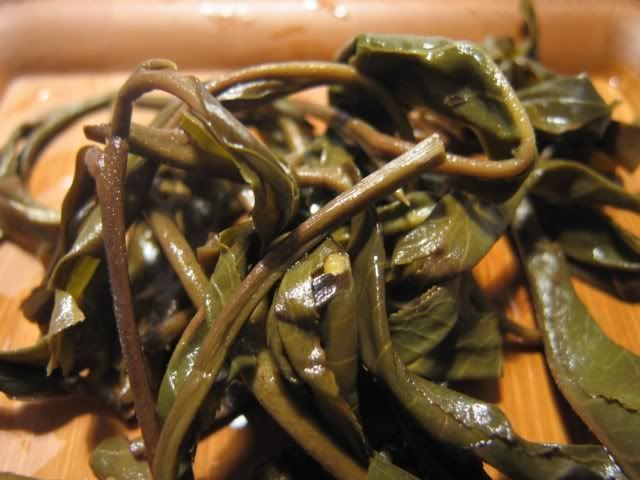More puerh research today.
I’ve been a bit baffled and confused by all that I’ve been reading these days. The concensus on Sanzui seems to be that a cake is bad for aging if either 1) it has gone through too high a temperature at “kill-green”, which causes it to be like green tea. Green tea, as we all know, age poorly. 2) It has gone through pre-fermentation (I think it means oxidation here), similar to an oolong. These teas will not age as well, and can be just as deadly as the green tea puerh in that after a few years, the tea will get stale and uninteresting.
So, aside from good raw materials, you need good craftsmanship to go with the raw tea to make it a good puerh. Sounds simple enough.
Where, and how, do you find this tea with good craftsmanship and good material though? And how do you identify them when you are there?
Let’s throw materials aside for a second and focus on the craftsmanship bit. Basically, you want to eliminate (again from what I’ve been gathering from Sanzui) puerh that are too prominent in fragrance when early (could be either 1 or 2 above), puerh that have signs of honey smell/taste (indicating 2), puerh that are not bitter/astringent (could be both 1 or 2) at all….
Which still leaves a lot of room for error.
I was drinking my maocha from Yiwu today, using more leaves than I did last time. Somehow, I did not enjoy it nearly as much as I did last time. Something was different about the tea — it tastes a bit aged. While aging might be a bit faster in wild/old tree teas, I don’t think it’s quite THAT fast when one week makes such a big difference. What’s going on? Then I smelled the lid… hmmm, there’s a mix of honey/floral smell AND a smell of that slightly vegetal raw puerh smell. Odd. Supposedly, this smell goes away when processed at too high a temperature because the aromatic component that gives off this smell will be evaporated when the processing temperature is high.
So I was a little suspicious of how this tea was processed. While it has some astringency/bitterness, it’s not that evident. Then again, Yiwu teas are like that. I started looking at the wet leaves, and it seems like… or at least I think it might be, the case that there are maocha of different ages in this mix, and that it is not all the same vintage/batch, but rather different ones mixed in together. Maybe last time the bit that I pulled out consisted mostly of younger leaves, thus it tasted so fresh, while this time it is a bit of a mixed bag, and thus the aromatics/taste was a bit…. confused?
I then decided to brew up another maocha to compare. I brewed the Nannuo maocha that I have leftover. I also brewed up a sample again of the Yiwu cake that I got.
It’s a very interesting experiment. The Nannuo maocha brewed up a HIGHLY aromatic cup. The leaves, when I smelled them after the infusion, smelled very strongly of some sort of flower/honey. Hmmm. The taste was sweet, mild, not bitter/astringent. Hmmm.
Compared to this, the Yiwu cake was much more boring. Not much aromatics, a bit of a sweet smell afterwards, but when I smell the wet leaves, there’s basically nothing to it aside from a hint of sweetness. Compared to the Nannuo…. the difference is striking.
Here are some pictures. Unfortunately, visually they don’t say much.

From left to right is the Nannuo, Yiwu cake, and Yiwu maocha. Sorry for the lighting — the Yiwu maocha got less light.

Nannuo

Cake

Yiwu maocha
Some of the Yiwu maocha were reddish brown throughout, which is why I thought something was aged about them (coupled with the way it tasted). It also reminds me a hint of the Zhenchunya Hao taste, as well as the Yiwu Zhenpin taste. I need to ask that girl if this was a mixed bag. Unfortunately, she may very well not know either.
This didn’t really get me any closer to answering any of my questions. I can’t say that the Nannuo won’t age well, and the Yiwu might, or vice versa. All I learned is that the difference between different levels of aroma is stunning.

1 response so far ↓
Meili_snow // November 3, 2006 at 1:51 am |
Marshal, i feel so familiar and so exciting to bump into your blog..
as you have mentioned that many google searches direct their links to your pages. for i am also crazy about puer tea, and surfing the net for some authentic translations of the puer terms..
i just try some Maocha lately, including the Maocha from the Lahu ancient tea plant, the Nannuo, the Dayi Maocha, and Yiwu Maocha…..i notice that different places endow these Maocha unique flavors and characters. Although, as Maocha, they displace to some extent universal features of the raw tea, such as the smell of flower or grass, the honey tastes after a few rounds of infusions, and strong qi, they have their own signitures and characters…the Lahu Maocha from Lincang tends to have more lively tastes and more satisfying smells. if brewed with medium temperature, it will not give strong astringent and bitter flavors, but its Huigan is wonderful, and lasts quite long…the Maocha from Nannou tends to have a more tender smell, and change delicately in the process of infusion, and its taste in the mouth is quite stable but quit soothing..
From what you describ in the infusion of Yiwu, it might have been made with different ingredients to universalize the tastes and flavors of the products, but just not as good as those made sole with the same kind of tea material.
i am very glad to know you.. and it gives me great enlightenment…
thanks a lot!!